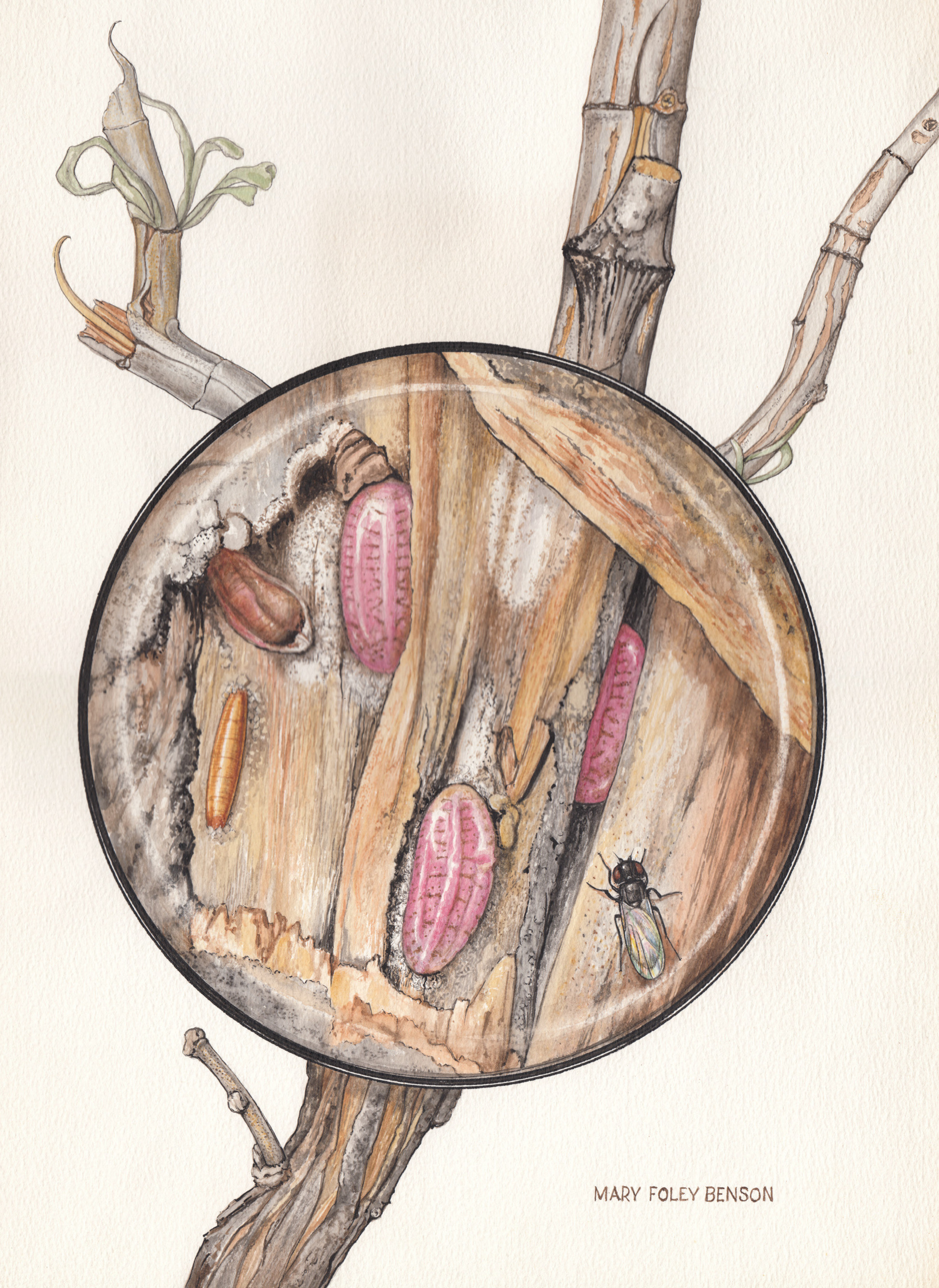Valid Names Results
Ovaticoccus salviae Miller in Miller & McKenzie, 1967 (Eriococcidae: Ovaticoccus)Nomenclatural History
- Ovaticoccus salviae Miller in Miller & McKenzie 1967: 521-523. Type data: UNITED STATES: California, San Bernardino Co., 11 miles southeast of Camp Angelus, on Salvia apiana, 30/07/1964, by D.R. Miller & J.A. Froebe. Holotype, female, by original designation Type depository: Davis: The Bohart Museum of Entomology, University of California, California, USA; accepted valid name Notes: Paratypes in CDAE and USNM. Illustr.
Common Names
- salvia ovaticoccin MillerMc1967
Ecological Associates
Hosts:
Families: 1 | Genera: 1
- Lamiaceae
- Salvia | MillerMc1967
- Salvia apiana | MillerMc1967
- Salvia mellifera | MillerMc1967
Geographic Distribution
Countries: 1
- United States
- California | MillerMc1967
Keys
- MillerSt2022: pp.87-88 ( Adult (F) ) [Ovaticoccus and Hypericicoccus species]
- MillerSt2022: pp.88-89 ( Second instar (F) ) [Ovaticoccus and Hypericicoccus species]
- MillerSt2022: pp.89 ( Second instar (M) ) [Ovaticoccus and Hypericicoccus species]
- PellizKo2011: pp.65 ( Adult (F) ) [Key to adult female Ovaticoccus]
- Gill1993: pp.173 ( Adult (F) ) [Ovaticoccus species of California]
- MillerMc1967: pp.507 ( Adult (F) ) [North American species of Ovaticoccus]
Remarks
- Systematics: Slide-mounted adult female with: enlarged setae nipple shaped, sides convex basally, concave near apex, apices rounded or truncate, setae all approximately same size, arranged in 3 or 4 longitudinal lines on each side of abdomen; hair-like setae scattered over dorsal surface; anal ring without pores; dorsal multilocular pores present; ventral multilocular pores predominantly with 5 loculi; cruciform pores present on venter only; antennae 6-segmented; microtubular ducts medium in length, with 2 sclerotized areas (Miller & McKenzie, 1967).
- Structure: Adult female elongate, rotund, with longitudinal mediodorsal ridge. Body pink, derm smooth and shiny. Intersegmental areas demarked both dorsally and ventrally with clear brown. Crushed body contents purple, legs yellow. White mealy secretion present only on venter. Filamentous ovisac secretion produced on dorsum, enclosing posterior three quarters of body (Miller & McKenzie, 1967).
- Biology: This species has a single generation each year with crawlers appearing as early as October, but more commonly in March and present until the end of May. Second-instar females were present from early May to mid-July and adult females were encountered in most samples except in March and April. Only a single second-instar male was collected, most likely because this instar forms its cocoon on parts of the plant that were not sampled. Adult males also were rarely collected, but those that were found were taken in July, August, and September. (Miller & Stocks, 2022)
- General Remarks: Detailed description and illustration of female given by Miller & McKenzie (1967). Descriptions and illustrations of the second-instar female, adult male, second-instar male, and first-instar nymph in Miller & Stocks (2022)
Illustrations
Citations
- Gill1993: distribution, host, illustration, taxonomy, 173, 175
- Kozar2009: distribution, taxonomy, 105
- MillerGi2000: catalog, description, distribution, host, taxonomy, 434-435
- MillerMc1967: description, distribution, host, illustration, taxonomy, 521-523
- MillerSt2022: description, distribution, host, illustration, key, male, nymph, 89, 151-159, 211
- PellizKo2011: taxonomy, 65
- PooleGe1997: distribution, 355
- VonEll2025: distribution, 26








